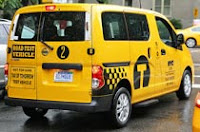 |
| Example of Omron products (source: Omron youtube channel) |
Omron is an international medical device manufacturer that sells home healthcare devices such as blood pressure monitors, body weight and composition meters, and others.
Under Mr. Ogino's directives, Omron product developers now must investigate the validity of product concept from the customer's perspective and identify "true" customer needs. No longer are product features such as 'integrated,' 'compact,' 'easy to read,' and so forth sufficient.
"Tens of thousands people end up with amputations every year because of high blood sugar. We make blood glucose meters to make such incidents zero. We make nebulizers with a conviction to cure asthma during childhood. I make sure in our company that no product planning takes place without first making clear why we should make the product, what is the ultimate goal," says Mr. Ogino.
This new mindset, code-named "Project Zero" (meaning driving down users' adverse health events to zero), will not only help the company differentiate itself from other wearable technology manufacturers, but also it can bring them closer to becoming in compliance with the new ISO 16355 for QFD. Here is how... Read the full article.
Learn the new tools...
